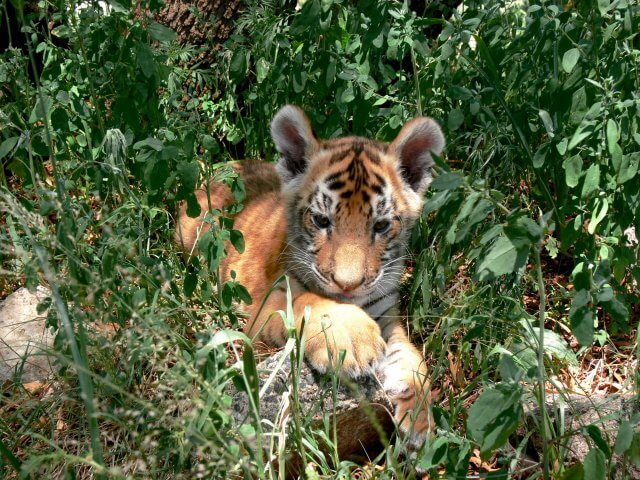The Miraculous Wonders of Nature: Tiger Cubs Born Blind with Enchanting Blue Eyes
The Wonders of Nature:
Tiger Cubs Born Blind with Blue Eyes” – Witness the extraordinary journey of these majestic creatures, embracing their vulnerability and celebrating the miracles of nature.
The Wonders of Nature: Tiger Cubs Born Blind with Blue Eyes
Tiger cubs are born blind with blue eyes, which is a fascinating phenomenon in the world of nature.
The Fascinating Journey of Tiger Cubs: Born Blind with Blue Eyes
The wonders of nature never cease to amaze us. One such marvel is the journey of tiger cubs, who are born blind with striking blue eyes. This fascinating phenomenon is not only captivating but also holds significant importance in the survival of these majestic creatures.
When tiger cubs are born, their eyes are closed, and they are completely blind. It is a remarkable adaptation that ensures their safety and protection during their early vulnerable stages. The closed eyes shield them from the harsh environment and potential dangers, allowing them to rely solely on their mother for nourishment and care.
As the days pass, the tiger cubs slowly begin to open their eyes, revealing a mesmerizing shade of blue. This unique characteristic is a result of the tapetum lucidum, a reflective layer behind the retina that enhances their night vision. The blue color is a temporary pigment that gradually fades away as the cubs grow older, making way for the distinctive amber or green eyes that tigers are known for.
The journey of tiger cubs from blindness to sight is a gradual process. Initially, their vision is blurry and limited, but as they grow, their eyesight improves, allowing them to explore their surroundings with increasing clarity. This development is crucial for their survival, as it enables them to learn essential hunting skills from their mother and navigate their territory effectively.
During this period, the mother plays a vital role in nurturing and teaching her cubs. She guides them through the dense vegetation, teaching them how to stalk prey and providing them with the necessary skills to become successful hunters. The bond between a mother tiger and her cubs is incredibly strong, and this period of learning and growth strengthens their relationship.
As the tiger cubs continue to grow, their eyes gradually change color, transitioning from blue to their final hue. This transformation is a visual representation of their journey from infancy to adulthood. It symbolizes their readiness to venture out into the world and establish their own territories.
The blue-eyed phase of tiger cubs is not only a captivating sight but also a reminder of the delicate balance of nature. It serves as a testament to the incredible adaptations that animals possess to ensure their survival. The temporary blindness and blue eyes of tiger cubs are nature’s way of safeguarding them during their most vulnerable stage, allowing them to grow and thrive in the wild.
In conclusion, the journey of tiger cubs from being born blind with blue eyes to developing their sight is a remarkable process. It showcases the wonders of nature and the intricate adaptations that animals possess. The temporary blindness and blue eyes serve as a protective mechanism, ensuring the cubs’ safety and allowing them to learn and grow under the watchful eye of their mother. As they transition from blue to their final eye color, it symbolizes their readiness to embark on their own journey in the wild. The journey of tiger cubs is a testament to the resilience and beauty of nature, reminding us of the marvels that exist in the animal kingdom.
Conclusion
Wonders of Nature: tiger cubs are born blind with blue eyes, which is a fascinating aspect of nature. This unique characteristic allows them to rely on their mother for survival and gradually develop their vision as they grow. The wonders of nature never cease to amaze us, and the birth of blind tiger cubs with blue eyes is a testament to the incredible diversity and adaptations found in the animal kingdom.
Read More About Tigers From Wikipedia




